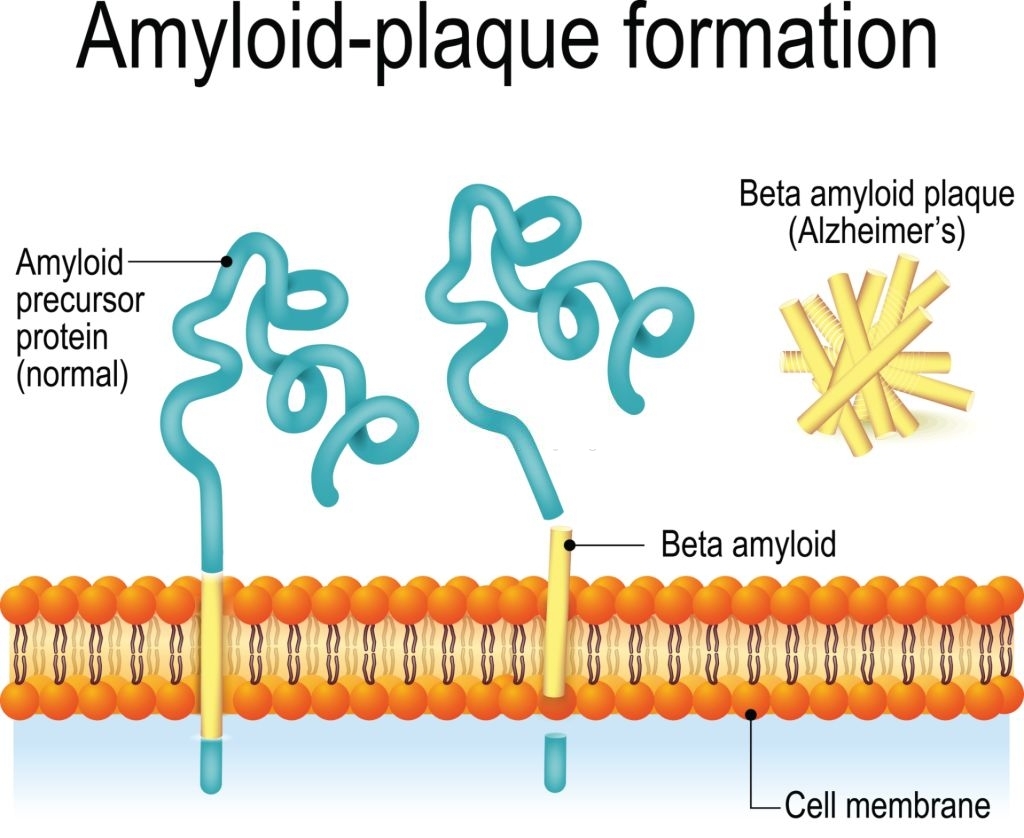Amyloid Plaques
Amyloid plaques are one of the two brain abnormalities that define Alzheimer's disease (AD). The other hallmark is neurofibrillary tangles. Technically, an individual may display all the behavioral and cognitive symptoms of AD, but if the brain does not contain the hallmark plaques and tangles, there is no diagnosis of AD. The appearance of amyloid plaques in the brain can proceed the behavioral symptoms by years.

Amyloid plaques are sticky buildup which accumulates outside nerve cells, or neurons. Amyloid is a protein that is normally found throughout the body. For reasons as yet unknown, in AD, the protein divides improperly, creating a form called beta amyloid which is toxic to neurons in the brain.
Beta Amyloid Plaques
No one really knows why beta amyloid is formed or why it causes cell death. One possibility is that it may break into fragments, releasing substances called free radicals that attack neurons. Another possibility is that beta amyloid forms tiny channels (holes) in neuron membranes, allowing influx of unlimited amounts of calcium. Although regulated amounts of calcium are necessary for normal neuronal function, too much can kill a neuron. However beta amyloid does its work, the result is that neurons begin to die. Plaques begin to form that consist of these degenerating neurons and clumps of the amyloid protein itself. The body cannot break these clumps down and dispose of them, so they accumulate in the brain.
The apoE4 gene, a genetic abnormality which has been implicated in AD, may be involved in the production of amyloid plaques. The gene may produce a protein that latches on to the toxic beta amyloid and makes it impossible for the body to dissolve. As a result, the beta amyloid accumulates as plaques in the brain. Molecules called free radicals may also play a role. Normally, free radicals play important roles in the body, such as helping the immune system fight off disease. However, too many free radicals can start to upset the delicate balance within a neuron. Nerve cells producing beta amyloid seem also to produce more free radicals. It may be the case that free radicals thus boost beta amyloid production.
by Catherine E. Myers. Copyright © 2006 Memory Loss and the Brain



